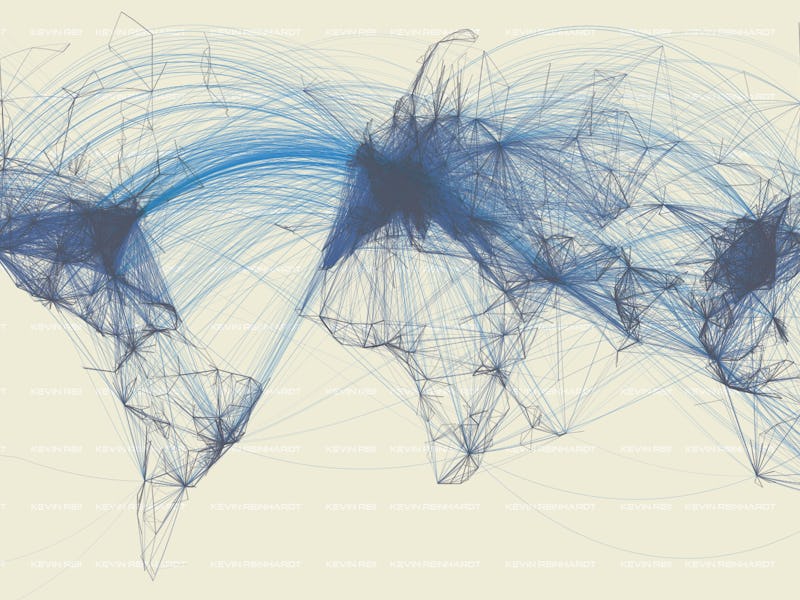This Flight Map Shows the Surprising Ways People Travel the World

Aviation has improved dramatically over the past century, changing the way people consider their place in the world and forging relationships over previously unimaginable distances. A map by photogrammetry expert Kevin Reinhardt shows just how true that is. The hidden network of paths that make up global flight plans reveals the interesting biases present in these routes, and where the human race is most concentrated. Western Europe is heavily served, while Africa is barely present. It’s a stark contrast to the map of the world’s airports, which mostly showed a hyperconnected North America.
“No continental boundaries were used,” Reinhardt wrote on his project page. “It is simply the combination of color, transparency and thickness of flying patterns which cause the extents of cities, countries and continents to emerge.”
Take a look at the full map below:
World map of global flight patterns.
For starters, Germany is basically invisible. The lines traversing the central European nation are so thick it’s barely possible to see anything. There were 918 million air passengers in the European Union in 2015, compared to 895 million in the United States that same year. Europe has the largest number of passengers flying with low-cost airlines in the world: in 2015, 418 million flyers took advantage of carriers like Ryanair and Easyjet to get around.
Another interesting aspect is the areas where there’s comparatively few scheduled flights. West China has a large gap where the Tibetan plateau lies, the world’s highest and largest plateau. To the right, you’ll see a large congregation of flights on the country’s east coast. On the whole, China seems relatively sparse in terms of flights, but this is more due to where the economic centers lie in the country. In fact, China had the second highest number of passengers flying than any other country in the world in 2015, racking up 436 million flyers.
Of course, there are some areas that should come as little surprise. The transatlantic crossing has a thick blue wave connecting the United States and Europe. The route has been a source of fascination for decades: in 1913, the Daily Mail offered £10,000 ($12,294) to anyone who could complete the flight, a feat first accomplished in 1919. From 1976 to 2003, Concorde captured the imagination of the public by offering supersonic transatlantic flights, but today, headlines appear more concerned with price than speed.
Explore the interactive map here.